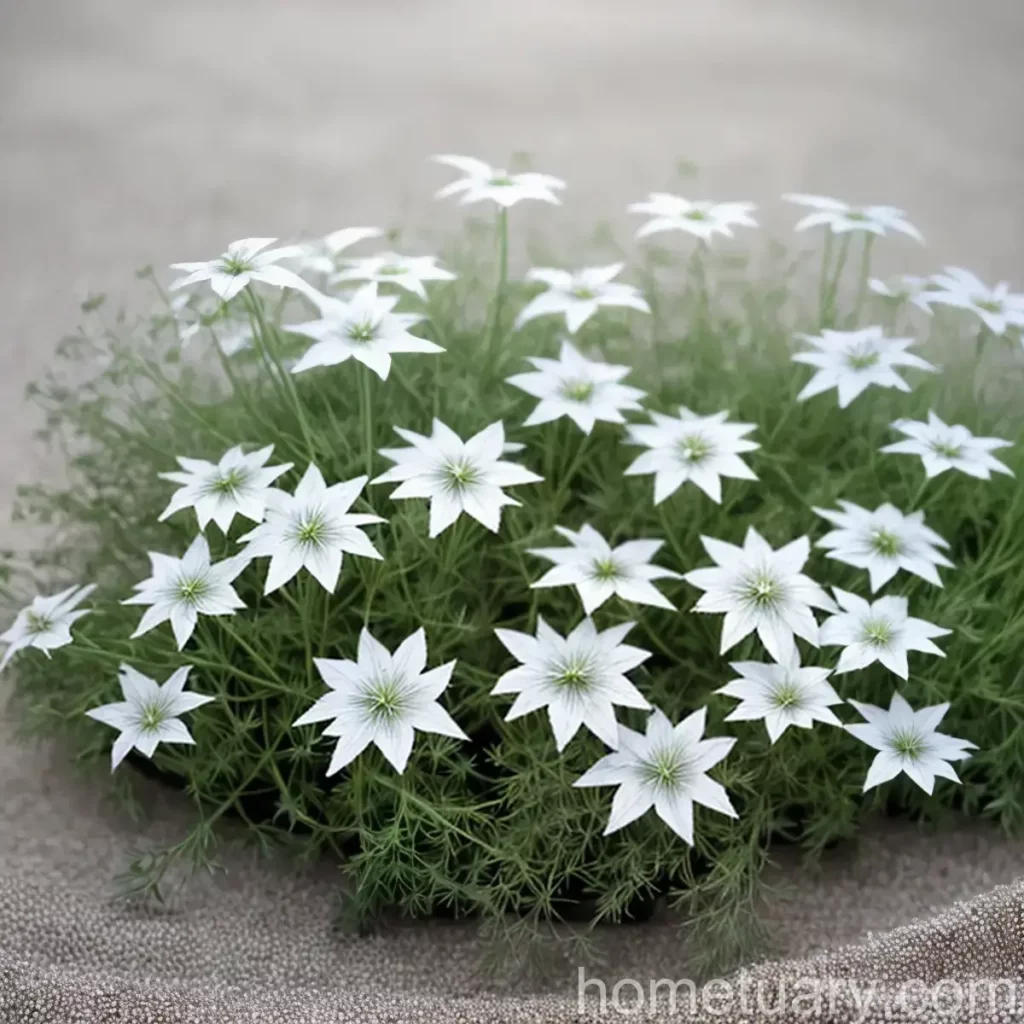Plant Scientist’s Guide to Snow in Summer (Cerastium tomentosum ‘Silberteppich’ SILVER CARPET)
Plants, with their diverse shapes, sizes, and colors, can add beauty and life to any environment. As a plant scientist, I am excited to delve into the fascinating world of the “snow in summer” plant, scientifically known as Cerastium tomentosum ‘Silberteppich.’ In this comprehensive guide, we will explore the culture, uses, care requirements, propagation, and maintenance tips for this stunning and versatile ground cover plant. Additionally, we will learn about common diseases and pests that may affect the snow in summer plant, as well as some interesting botanical facts. Let’s embark on this botanical journey and uncover the secrets of the snow in summer plant.
What is the Snow in Summer (Cerastium tomentosum ‘Silberteppich’ SILVER CARPET)?
The snow in summer plant, or Cerastium tomentosum ‘Silberteppich,’ is a low-growing, perennial ground cover that belongs to the Caryophyllaceae family. This plant is known for its attractive, silvery-gray foliage and delicate white flowers, which create a stunning visual display reminiscent of a blanket of snow covering the ground, thus earning it the common name “snow in summer.” The ‘Silberteppich’ variety, also referred to as Silver Carpet, is particularly prized for its dense, mat-forming growth habit and low maintenance requirements.
With its impressive ability to thrive in various environmental conditions, the snow in summer plant has become a popular choice for gardeners and landscapers looking to add a touch of elegance and tranquility to their outdoor spaces. Let’s delve deeper into the various aspects of this enchanting plant, from its cultural significance to its practical uses and care requirements.
Key Takeaways – Snow in Summer (Cerastium tomentosum ‘Silberteppich’ SILVER CARPET)
Culture
Uses
- Ground cover
- Erosion control
- Rock gardens
- Path edging
- Container planting
- Accent plant for borders
Water
- Moderate water needs
- Well-draining soil
- Avoid waterlogged conditions
Sunlight
- Full sun to partial shade
- Thrives in sunny locations
- Tolerant of heat and drought
Fertilizer
- Minimal fertilizer requirements
- Use a balanced, slow-release fertilizer
Soil
- Well-draining, sandy or loamy soil
- Tolerant of poor soil conditions
- pH: Slightly acidic to slightly alkaline
Pruning
- Light shearing after flowering
- Maintains compact, tidy appearance
- Encourages new growth
Propagation
- Division
- Softwood cuttings
- Self-seeding in favorable conditions
Container Popularity
- Well-suited for containers
- Cascading growth habit
- Ideal for hanging baskets and elevated planters
Common Diseases
- Powdery mildew
- Rust
- Root rot (in waterlogged soil)
- Preventable with proper cultural practices
Disease Diagnosis
- Monitor for leaf discoloration or distortion
- Inspect for powdery fungal growth
- Treat promptly to prevent spread
Common Pests
- Aphids
- Spider mites
- Slugs and snails
- Monitor plant regularly for pest infestations
Botanist’s Tips
- Well-Drained Soil: Ensure proper drainage to prevent waterlogging, which can lead to root rot and other issues.
- Trimming: Regular light shearing post-flowering can help maintain a neat, compact growth habit.
- Sun Exposure: While adaptable, providing ample sunlight can promote lush foliage and prolific flowering.
- Pest Control: Monitor for common pests and take preventive measures to minimize infestations.
Fun Facts
- The silvery foliage of the snow in summer plant helps reflect sunlight, which can reduce soil moisture loss and mitigate heat stress.
- In some regions, the snow in summer plant is used as a traditional medicinal herb, believed to have various healing properties.
- The delicate flowers of the snow in summer plant are adored by pollinators and beneficial insects, making it a valuable addition to pollinator-friendly gardens.
Links to External Resources
For further information on snow in summer plant care and cultivation, check out the following resources:
– Royal Horticultural Society – Cerastium tomentosum ‘Silberteppich’
– Missouri Botanical Garden – Cerastium tomentosum
As a plant scientist, my passion for exploring the intricate details of plant species is fueled by the remarkable diversity and adaptability of nature’s creations. The snow in summer plant, also known as Cerastium tomentosum ‘Silberteppich,’ is a prime example of nature’s resilience and beauty. In this comprehensive guide, we have gained insights into the cultural significance, practical uses, and essential care requirements for this captivating ground cover plant.
Whether adorning rock gardens, accentuating borders, or cascading from containers, the snow in summer plant has captured the hearts of gardeners and landscapers alike with its striking silver carpet of foliage and delicate white flowers. By understanding its water, sunlight, soil, and pruning needs, we can cultivate and showcase the snow in summer plant to its fullest potential, enriching outdoor spaces with its ethereal charm.
I hope this guide has ignited your curiosity and appreciation for the snow in summer plant, inspiring you to explore its enchanting world and consider incorporating it into your own botanical endeavors. As we continue to unravel the mysteries of plant life, let us cherish and celebrate the remarkable beauty and diversity of the natural world.
Disclaimer: This blog post is for informational purposes only and does not constitute professional botanical advice. Always consult with a certified horticulturist or plant care specialist for specific plant-related inquiries and guidance.















